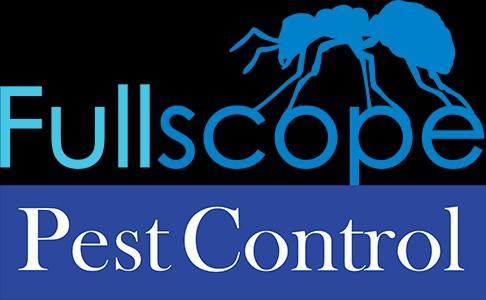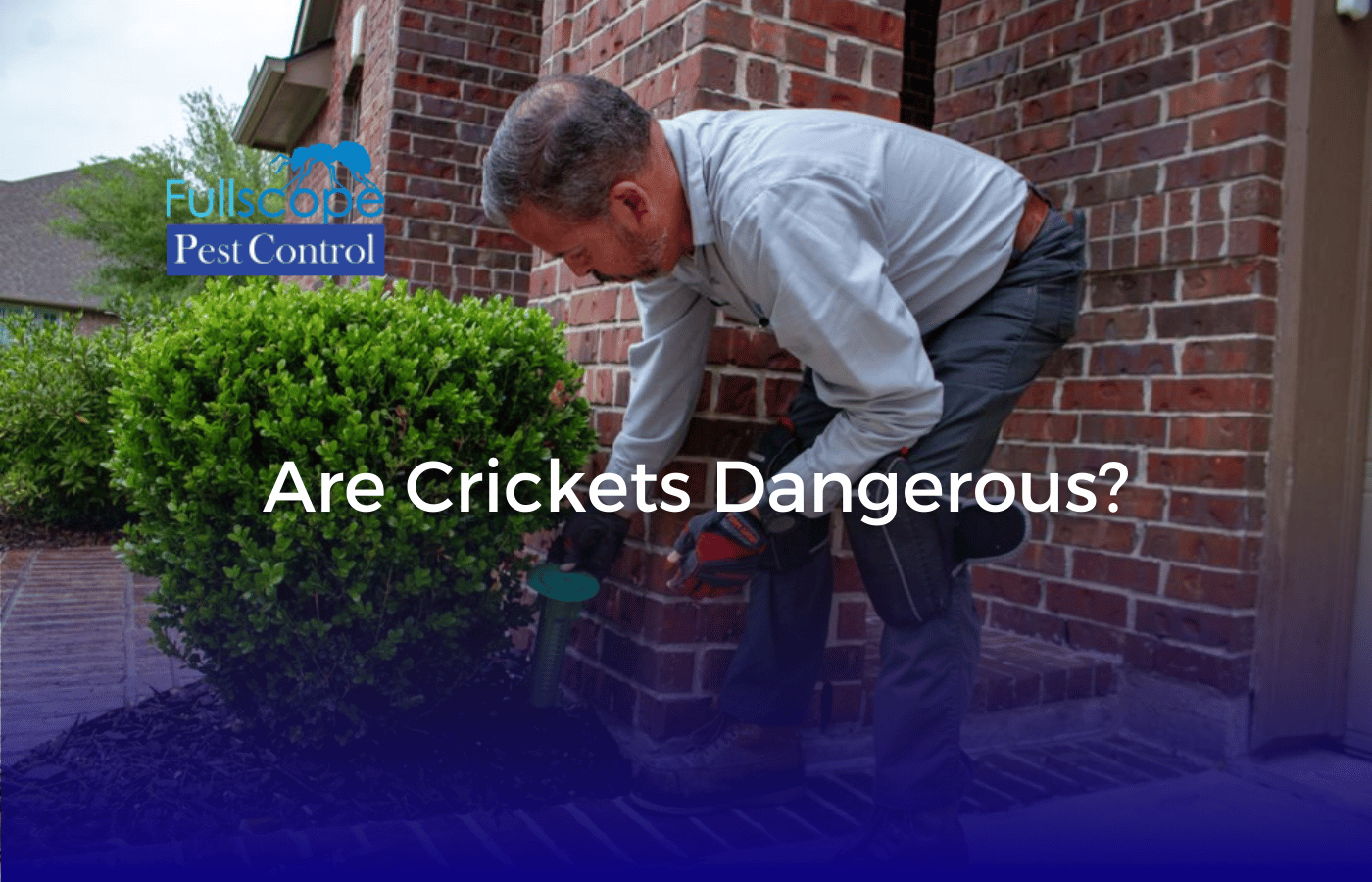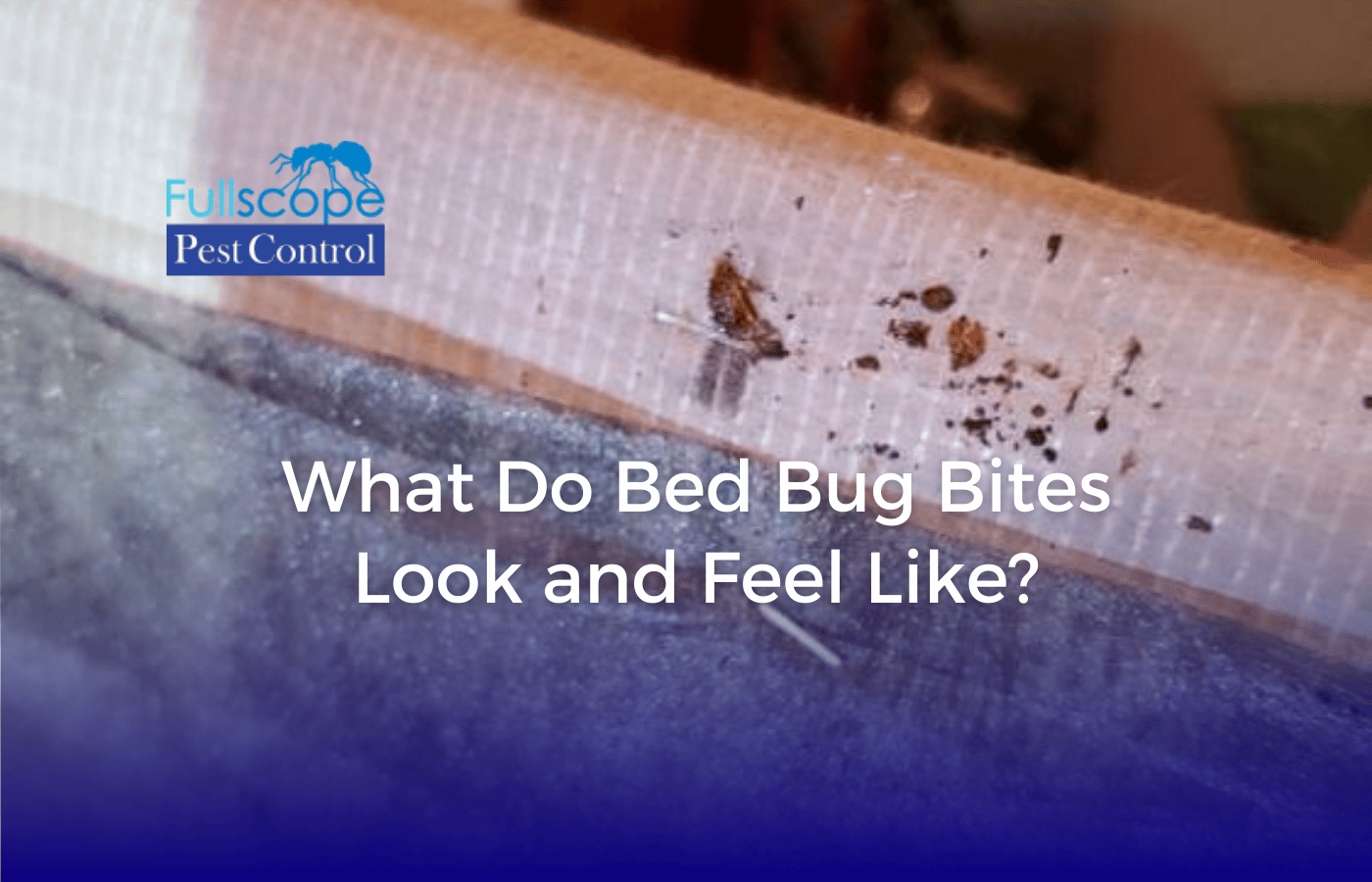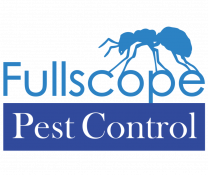Key Highlights
- Termites without wings can still cause damage to your home and property.
- Common warning signs of termite infestation include mud tubes on exterior walls, hollow sounding wood structures, and piles of wings left behind.
- Other signs to look out for include discolored or drooping drywall, peeling paint that resembles water damage, and tight-fitting doors and hard-to-open windows.
- Termite droppings near wood surfaces, wood that crumbles under slight pressure, visible mazes within walls or furniture, and clicking sounds within walls are also indicators of termite infestation.
- Understanding the life cycle and differences between winged and wingless termites can help you identify the signs of termite damage and take appropriate action.
- Regular inspections and natural prevention methods are crucial in preventing termite infestations, but professional termite treatment options may be necessary in severe cases.
Introduction
Termites are one of the most destructive pests that can infest your home. While most people are familiar with the winged termites, known as termite swarmers, it’s important to note that these pests can also cause significant damage without wings. Termites without wings, also known as worker termites, are responsible for the majority of the damage caused by termite infestations. They work tirelessly, feeding on wood and creating tunnels and galleries within the structure of your home.
Identifying the warning signs of termites without wings is crucial in detecting and addressing termite infestations early on. By recognizing these signs, you can take appropriate action and prevent further damage to your property. In this blog, we will discuss the top 10 warning signs of termites without wings and provide insights into understanding wingless termites, preventing termite infestations, professional termite treatment options, and repairing termite damage.
It’s important to note that if you suspect a termite infestation, it’s best to consult with a professional pest control service. They have the expertise to accurately identify and treat termite infestations, ensuring the safety and structural integrity of your home. Now let’s dive into the warning signs of termites without wings and how to identify them.
10 Key Warning Signs of Termites Without Wings
Termites can be sneaky and destructive pests, and it’s important to be vigilant in detecting the warning signs of a termite infestation. Here are the top 10 key warning signs of termites without wings:
1. Mud Tubes on Exterior Walls
One of the most common signs of a termite infestation is the presence of mud tubes on exterior walls. Subterranean termites, which are the most common type of termites in the United States, build these tubes to protect themselves while they travel between their nest and a food source. These tubes are made of soil, wood particles, and saliva, and they serve as a shelter for the termites. If you notice mud tubes on your exterior walls, it’s a clear indication that termites are present and actively feeding on the wood in your home. It’s important to address this issue promptly to prevent further structural damage.
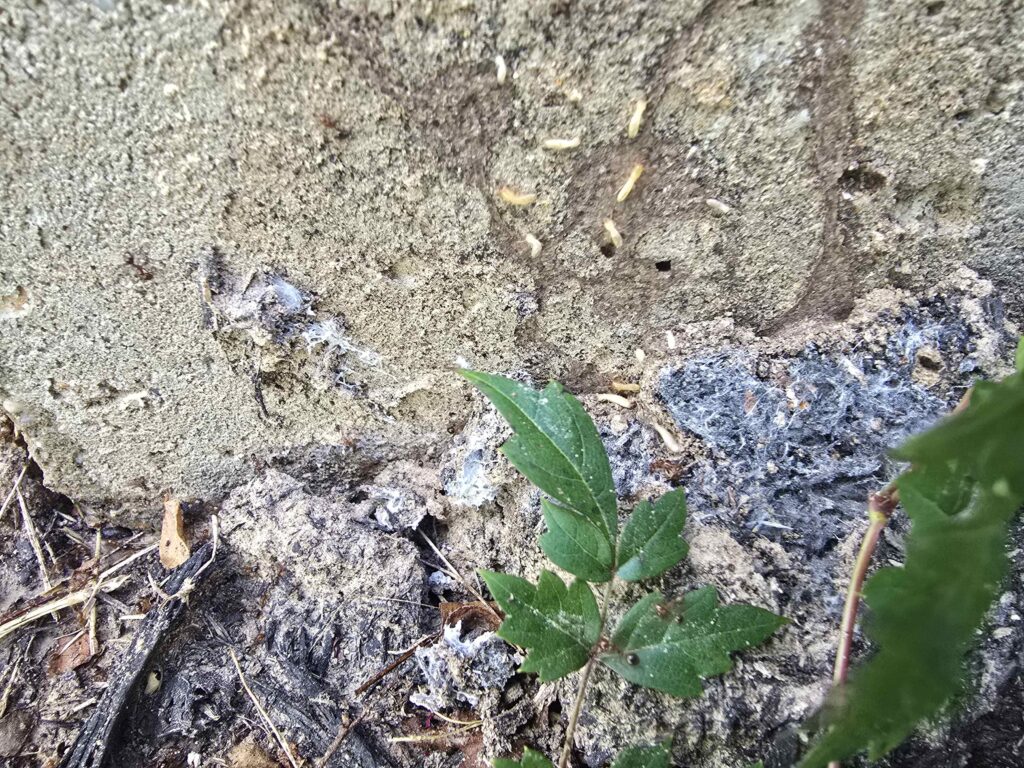
2. Hollow Sounding Wood Structures
Another warning sign of a termite infestation is hollow-sounding wood structures. Termites feed on the cellulose in wood, hollowing it out from the inside. When you tap or knock on a wooden structure that is infested with termites, it may produce a hollow sound due to the tunnels and galleries created by the termites. This is a clear indication that the wood has been damaged by termites and needs to be addressed immediately. If left untreated, the structural integrity of the wood can be compromised, leading to costly repairs.
3. Frass: Termite Droppings Near Wood Surfaces
Termite droppings, also known as frass, are another sign of a termite infestation. Drywood termites, a type of termite that does not require contact with soil, produce pellet-like droppings as they feed on wood. These droppings are usually small, elongated, and have a granular appearance. If you notice piles of frass near wooden surfaces, it’s a strong indication that termites are present and actively feeding on the wood. Removing the frass and addressing the termite infestation promptly is crucial to prevent further damage to your property.
4. Discolored or Drooping Drywall
Discolored or drooping drywall can be a sign of both termite infestation and moisture issues. Termites require moisture to survive, and their presence can lead to excess moisture in the affected areas. This can cause the drywall to become discolored, swollen, or droop. If you notice any changes in the appearance or texture of your drywall, it’s important to investigate the cause. A termite infestation can cause significant damage to the structure of your home, and addressing it promptly is crucial to prevent further issues.
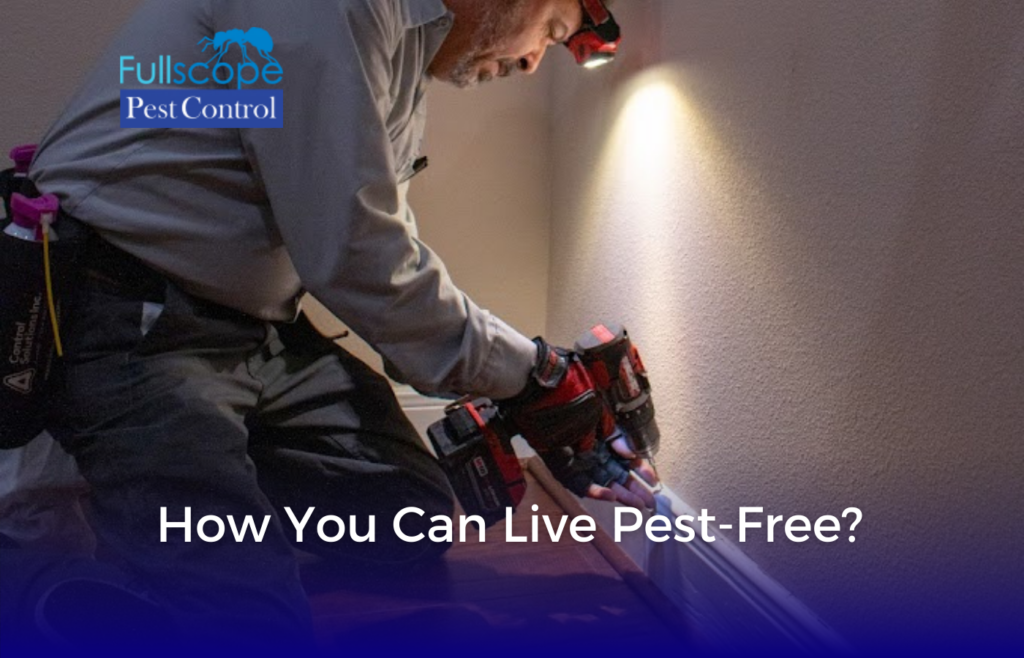
5. Peeling Paint That Resembles Water Damage
Peeling paint that resembles water damage can be a sign of termite damage. Termites create moisture as they feed on wood, and this moisture can cause paint to bubble, peel, or appear discolored. If you notice peeling paint that resembles water damage, it’s important to investigate the cause. While it could be due to a water source, such as a leak, it could also be a sign of a termite infestation. Addressing the underlying issue, whether it’s a water source or termites, is crucial to prevent further damage to your home.
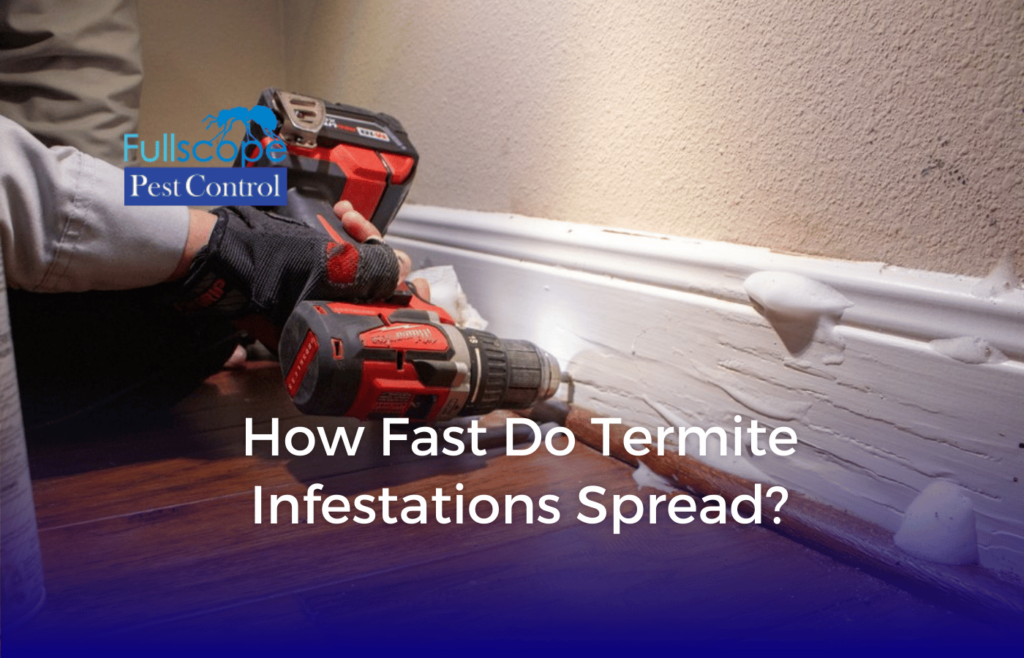
6. Wood That Crumbles Under Slight Pressure
Wood that crumbles under slight pressure is a clear sign of termite damage. Termites feed on the cellulose in wood, weakening its structure and causing it to become brittle. If you notice that wood in your home crumbles easily or appears damaged, it’s likely that termites are present. Crumbling wood can be found in areas such as window frames, door frames, and wooden furniture. Addressing the termite infestation promptly is essential to prevent further damage and protect the structural integrity of your home.
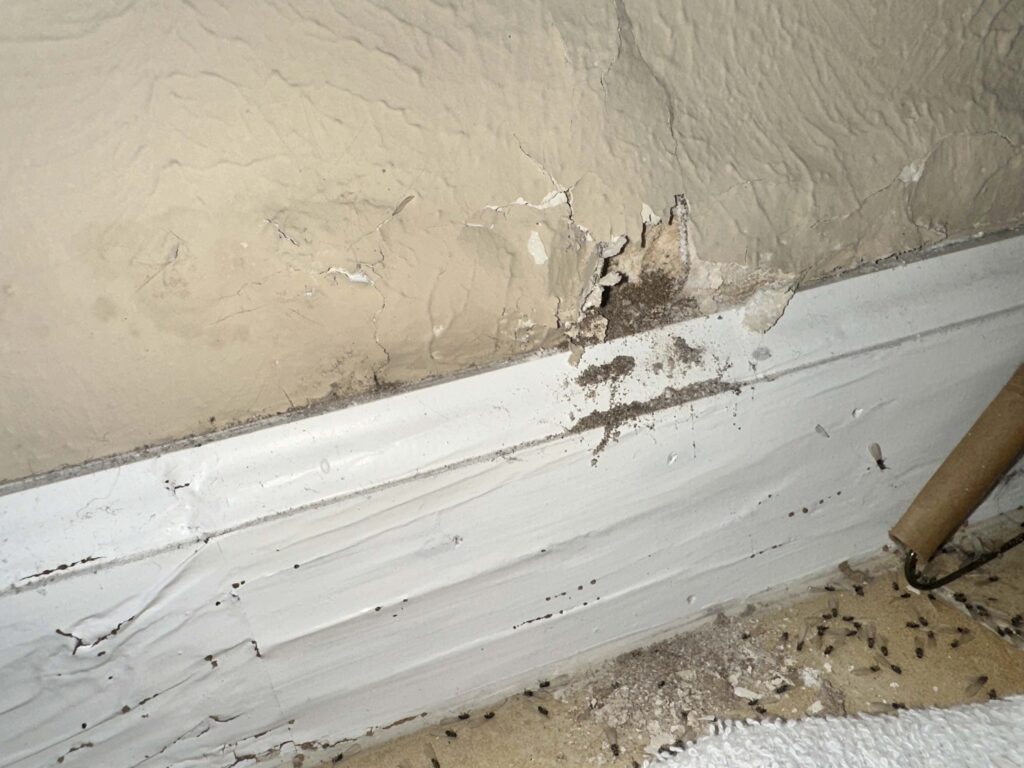
7. Tight Fitting Doors and Hard-to-Open Windows
Tight fitting doors and hard-to-open windows can be a sign of structural damage caused by termites. As termites feed on wooden structures, they can cause them to warp, swell, or become misshapen. This can result in doors and windows that no longer fit properly and are difficult to open or close. If you notice that your doors and windows are becoming increasingly difficult to operate, it’s important to investigate the cause. A termite infestation may be the underlying issue, and addressing it promptly is crucial to prevent further damage and ensure the security of your home.
8. Visible Mazes Within Walls or Furniture
Visible mazes within walls or furniture are clear signs of termite damage. As termites create tunnels and galleries within wooden structures, they can leave behind visible mazes or patterns. These mazes may be visible in walls, furniture, or other wooden surfaces. If you notice these intricate patterns, it’s a strong indication that termites are present and actively feeding on the wood. Addressing the termite infestation promptly is crucial to prevent further damage and protect the integrity of your home.
9. Piles of Wings Left Behind
Piles of wings left behind are a clear sign of termite swarmers. Termite swarmers are reproductive termites that emerge from the colony to mate and establish new colonies. After mating, swarmers shed their wings, leaving behind piles of discarded wings. If you notice piles of wings in your home or near wooden structures, it’s a strong indication that termite swarmers are present. While swarmers themselves do not cause damage, their presence indicates the presence of a mature termite colony nearby. Identifying the source of the swarmers and addressing the termite infestation promptly is crucial to prevent further damage to your property.
10. Clicking Sounds Within Walls
Clicking sounds within walls can be a sign of termite activity. Soldier termites, which are responsible for defending the termite colony, can produce clicking sounds as a form of communication. These sounds are often audible when you place your ear against a wall or wooden surface that is infested with termites. If you hear clicking sounds within your walls, it’s a strong indication that termites are present and actively feeding on the wood. Addressing the termite infestation promptly is crucial to prevent further damage and protect the structural integrity of your home.
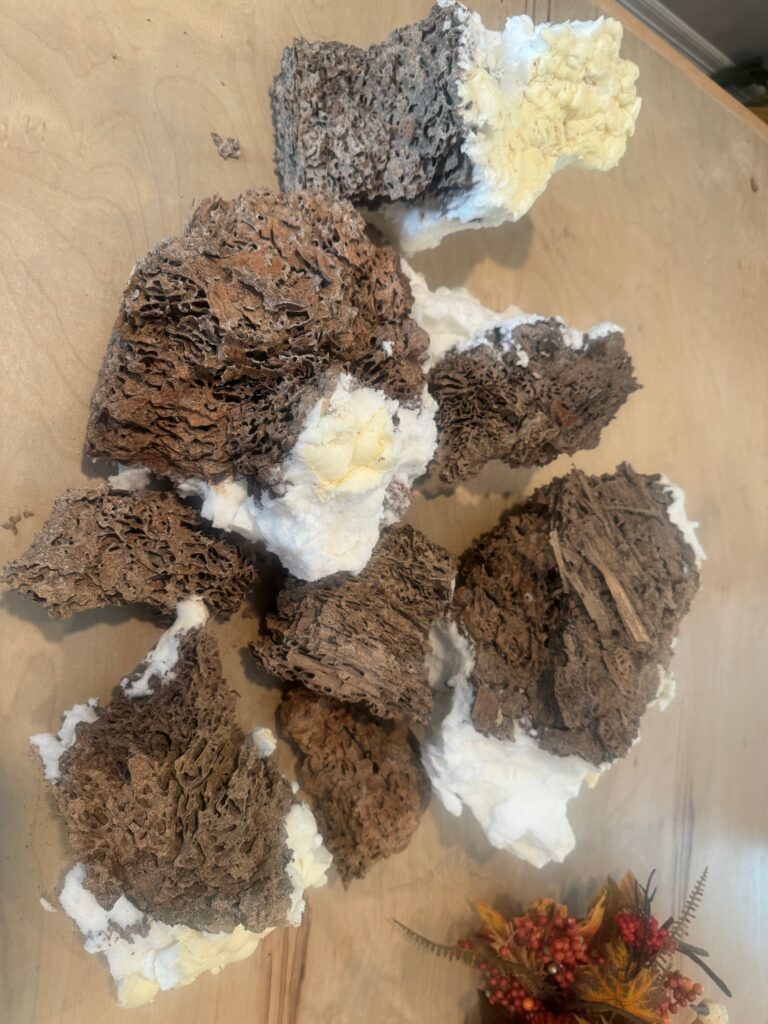
Understanding Wingless Termites
Understanding wingless termites is essential in identifying the signs of termite infestation and taking appropriate action. Wingless termites, also known as worker termites, are responsible for the majority of the damage caused by termite infestations. They are blind, soft-bodied insects that work tirelessly to feed on wood and create tunnels and galleries within the structure of your home. There are different types of termites, including subterranean termites and drywood termites, each with their own unique characteristics and behaviors. The life cycle of termites includes the emergence of winged termite swarmers, the establishment of new colonies, and the continuous work of worker termites in feeding and building termite nests. By understanding the life cycle and types of wingless termites, you can better identify the signs of termite infestation and take appropriate action to protect your home.
The Life Cycle of a Termite
The life cycle of a termite involves distinct stages: eggs, nymphs, workers, soldiers, and swarmers. Initially, termite eggs hatch into pale white nymphs, evolving into different castes based on their role within the colony. Worker termites are responsible for the majority of tasks, while soldiers defend the nest. Eventually, some termites transform into swarmers, developing wings to establish new colonies. This cyclical process ensures the longevity and propagation of termite colonies. Understanding this life cycle is crucial for effective pest management and eradication strategies.
Differences Between Winged and Wingless Termites
Winged and wingless termites display distinct characteristics that set them apart. Winged termites, also known as swarmers, have long, straight antennae and two pairs of wings that are equal in size. In contrast, wingless termites, often worker or soldier termites, have short, straight antennae and lack wings. While swarmers are reproductive termites responsible for creating new colonies, wingless termites play crucial roles in the termite nest’s functionality. Understanding these differences is essential for effective pest management strategies.
Difference Between Ant Swarmers and Termite Swarmers
Ant swarmers and termite swarmers are often mistaken for each other due to their similar appearances. However, there are subtle differences between the two insects that can help you distinguish them. Carpenter ant swarmers have a heart-shaped head with two bent antennae and a tapered thorax, while winged termites have a more uniform body shape. Additionally, carpenter ant swarmers have two sets of wings with the front set being longer than the back set, whereas termite swarmers have two pairs of equal-length wings. By understanding these variations, you can accurately identify whether you’re dealing with ant swarmers or winged termites.
Preventing Termite Infestations
Preventing termite infestations is crucial in protecting your home and property from the damage caused by these destructive pests. Effective pest management practices and natural prevention methods can help minimize the risk of termite infestations. Regular inspections by a professional pest control service are essential in detecting early signs of termite activity and taking appropriate action. Additionally, implementing natural prevention methods such as removing woodpiles, keeping soil away from wooden structures, and maintaining proper ventilation can help deter termites from entering your home. By being proactive in termite prevention, you can protect your home from the costly damages caused by termite infestations.
Regular Inspection Tips
Regular inspections by a professional pest control service are essential in detecting and addressing termite infestations early on. A trained professional can identify the signs of termite activity and develop a customized treatment plan to address the infestation. It’s recommended to have your home inspected for termites at least once a year, although more frequent inspections may be necessary in areas with high termite activity. Some pest control companies may offer free termite inspections as part of their services, providing you with peace of mind and ensuring the early detection and prevention of termite infestations. By scheduling regular inspections, you can stay ahead of potential termite infestations and protect your home from costly damages.
Recommended Read: How Fast Do Termite Infestations Spread?
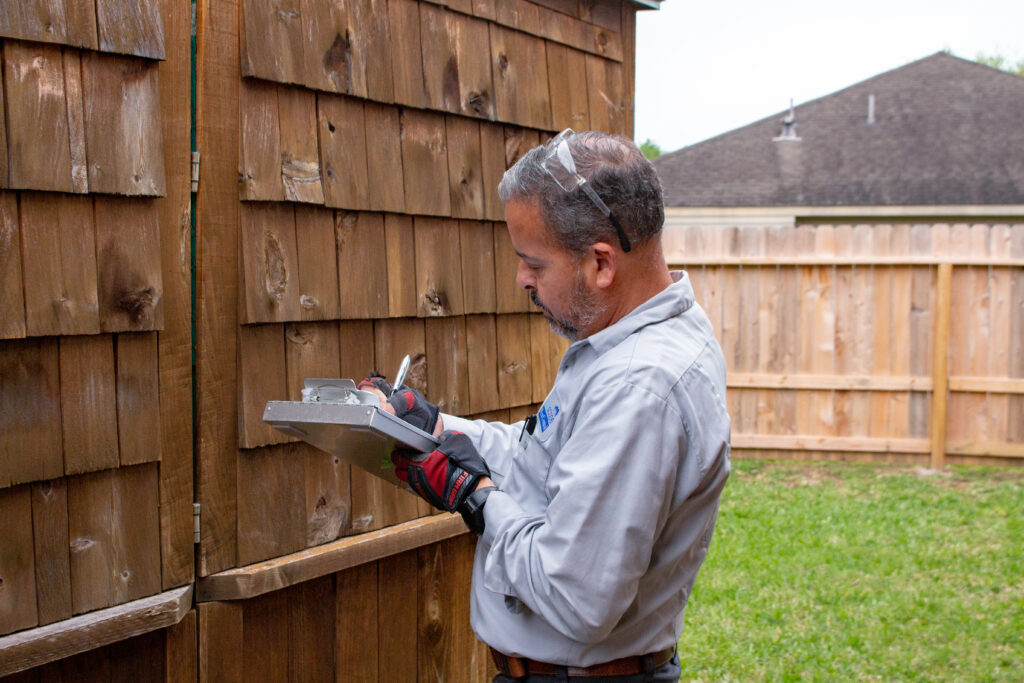
Natural Prevention Methods
In addition to regular inspections, implementing natural prevention methods can help deter termites from entering your home. Some eco-friendly options for termite prevention include:
- Removing woodpiles and debris near your home: Termites are attracted to wood and decaying plant material. By keeping woodpiles and debris away from your home’s foundation, you reduce the risk of termite infestations.
- Keeping soil away from wooden structures: Termites can easily access your home through soil-to-wood contact. By maintaining a gap between soil and wooden structures, such as fences and decks, you create a barrier that termites cannot easily penetrate.
- Proper ventilation: Moisture attracts termites, so ensuring proper ventilation in crawl spaces and attics can help reduce the risk of termite infestations.
- Treating wood with natural termite repellents: Some natural products, such as orange oil and neem oil, have been found to repel termites. Treating exposed wood with these natural repellents can provide an additional layer of protection against termite infestations.
By combining regular inspections with natural prevention methods, you can significantly reduce the risk of termite infestations and protect your home from potential damages.
Professional Termite Treatment Options
In severe cases, professional termite treatment options may be necessary to effectively eliminate termite infestations and protect your home. A professional exterminator can develop a customized termite treatment plan based on the specific needs of your home and the extent of the infestation. Chemical treatments, such as liquid insecticides, can be applied to the soil or directly to infested areas to eradicate termites. Baiting systems, which use termite baits to attract and eliminate termite colonies, can also be effective in controlling termite infestations. By consulting with a professional exterminator, you can determine the most appropriate termite treatment option for your home and ensure the complete elimination of termites.
Chemical Treatments
Chemical treatments are a common method used by professional exterminators to control termite infestations. Liquid insecticides can be applied to the soil around your home’s foundation or directly to infested areas to eliminate termites. These chemical treatments create a barrier that prevents termites from entering your home and eradicates existing termite colonies. It’s important to note that chemical treatments should be applied by trained professionals to ensure their effectiveness and minimize potential risks. Professional exterminators have the knowledge and expertise to safely handle and apply pesticides, ensuring the complete elimination of termites while prioritizing the safety of your family and pets.
Baiting Systems
Baiting systems are another effective termite treatment option used by professional exterminators. Baiting systems consist of termite baits that are strategically placed around your home to attract termites. Once termites consume the bait, they carry it back to their colonies, effectively eliminating the entire termite population. Baiting systems are an environmentally friendly approach to termite control, as they minimize the use of chemical treatments. However, it’s important to note that baiting systems require regular monitoring and maintenance to ensure their effectiveness. Professional exterminators can install and maintain baiting systems, providing long-term termite protection for your home.
Repairing Termite Damage
If your home has suffered from termite damage, it’s important to address the issue promptly to prevent further damage and ensure the structural integrity of your property. Repairing termite damage may require the expertise of professionals who specialize in termite repair services. These professionals can assess the extent of the damage, develop a comprehensive repair plan, and execute the necessary repairs to restore your home. Repairing termite damage may involve replacing damaged wood, reinforcing weakened structures, and implementing preventive measures to deter future termite infestations. By addressing termite damage promptly and effectively, you can protect the value of your property and ensure the safety of your home.
Identifying the Extent of Damage
Identifying the extent of termite damage is crucial in developing an effective repair plan and determining the necessary repairs. A professional termite repair service can assess the visible signs of termite damage, such as hollow-sounding wood structures, crumbling wood, or visible mazes within walls or furniture. They may also use specialized tools to detect hidden termite damage, such as moisture meters and thermal imaging cameras. By thoroughly assessing the extent of the damage, the repair service can provide an accurate estimate and develop a comprehensive repair plan to address the termite damage effectively.
DIY Repair Tips vs. Professional Repair Services
While some minor termite damage repairs can be done as DIY projects, it’s often recommended to seek the expertise of professional termite repair services. Professional repair services have the knowledge, experience, and tools necessary to effectively address termite damage and ensure the long-term structural integrity of your home. They can assess the extent of the damage, develop a comprehensive repair plan, and execute the necessary repairs with precision and expertise. DIY repair tips may be suitable for minor cosmetic repairs, but it’s important to consult with professionals for more significant termite damage repairs. By entrusting the repair process to professionals, you can have peace of mind knowing that the damage is properly addressed and your home is protected.
Conclusion
If you have noticed any of the warning signs mentioned above in your home, it’s crucial to take action promptly. Understanding the behavior and identifying wingless termites is essential in preventing infestations. Regular inspections, both professional and natural prevention methods, can help safeguard your property from costly damages. Remember, early detection is key to minimizing termite-related issues. Whether you opt for chemical treatments or baiting systems, addressing the problem swiftly can save you time and money in the long run. If you suspect a termite issue or need expert advice, don’t hesitate to get in touch with us for professional assistance.
Frequently Asked Questions
Can termites without wings still cause damage?
Yes, termites without wings, also known as worker termites, can still cause significant damage to your home. They work tirelessly, feeding on wood and creating tunnels and galleries within the structure of your home. If left untreated, termite infestations can lead to structural damage and costly repairs. It’s important to address termite infestations promptly to prevent further damage and protect the integrity of your home.
How often should I inspect my home for termites?
It’s recommended to inspect your home for termites at least once a year, although more frequent inspections may be necessary in areas with high termite activity. Regular inspections by a professional pest control service can help detect termite infestations and identify early signs of termite damage. It’s best to schedule inspections during the spring or summer months when termite activity is most prevalent.
What are the first steps to take after noticing signs of termites?
The first step after noticing signs of termites is to contact a professional exterminator for a thorough inspection. A professional can accurately identify the presence of termites and develop a customized termite treatment plan. Taking immediate action is crucial to prevent further damage and protect your home.
Are there eco-friendly options for termite treatment?
Yes, there are eco-friendly options for termite treatment. Natural prevention methods, such as removing woodpiles and debris near your home and treating wood with natural termite repellents, can help deter termites from entering your home. Additionally, some professional exterminators offer eco-friendly termite treatment options that prioritize the use of environmentally friendly products. Consult with a professional to explore eco-friendly termite treatment options that suit your needs.

